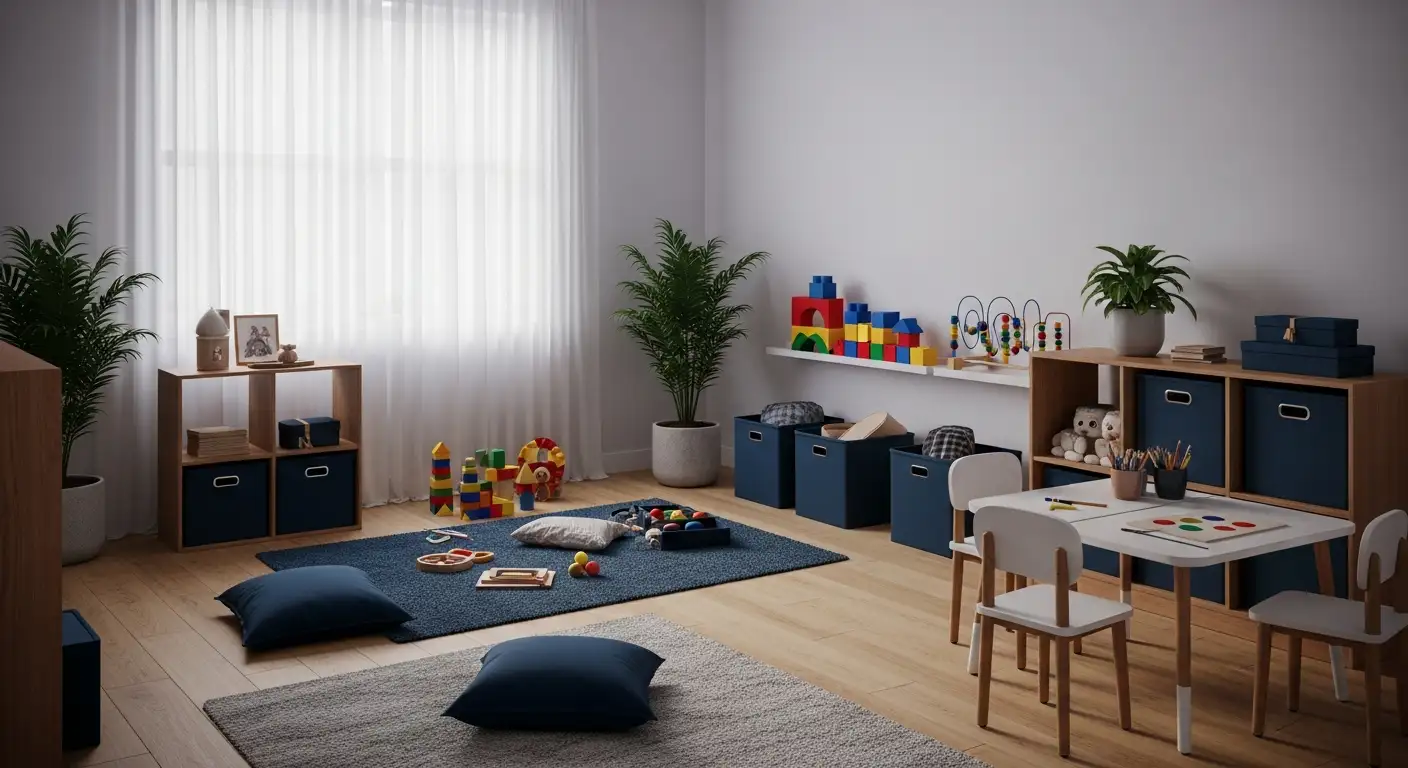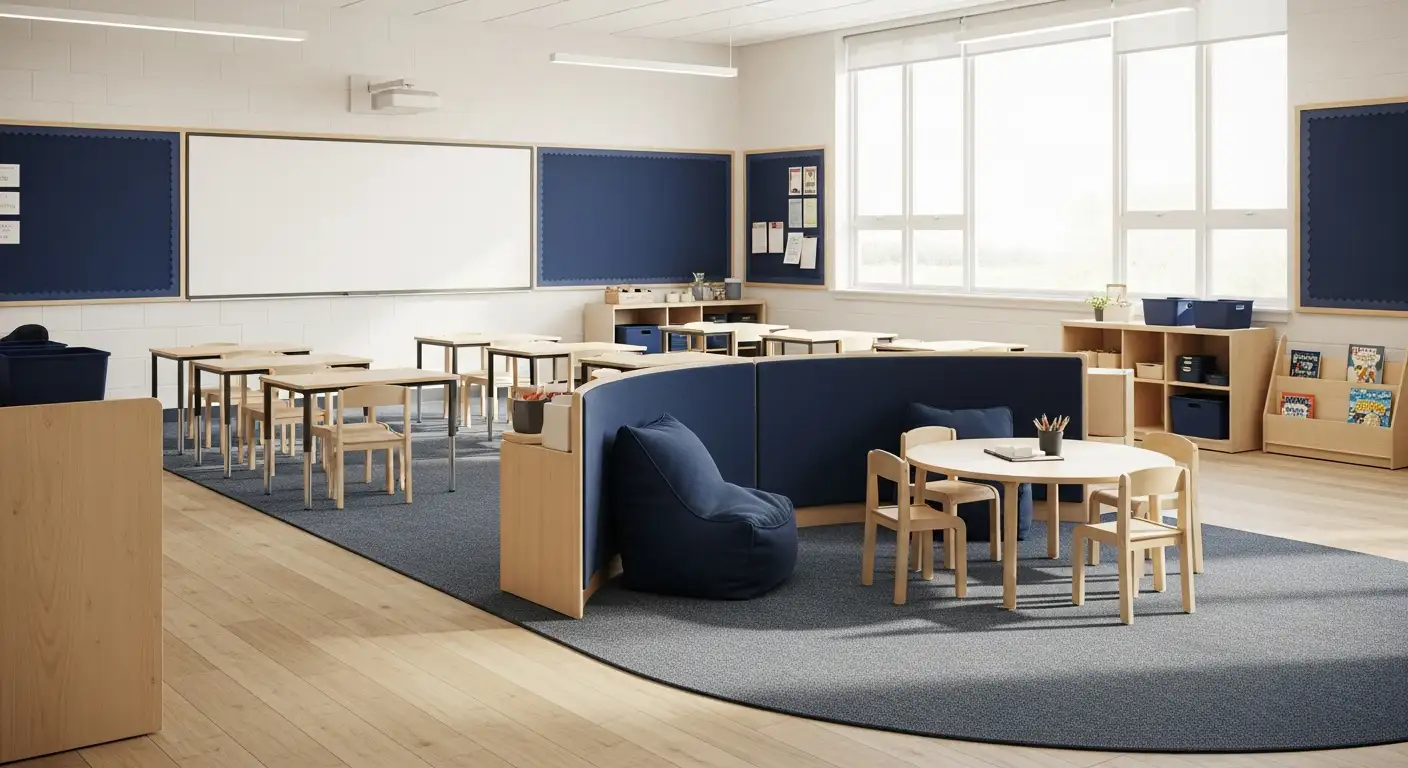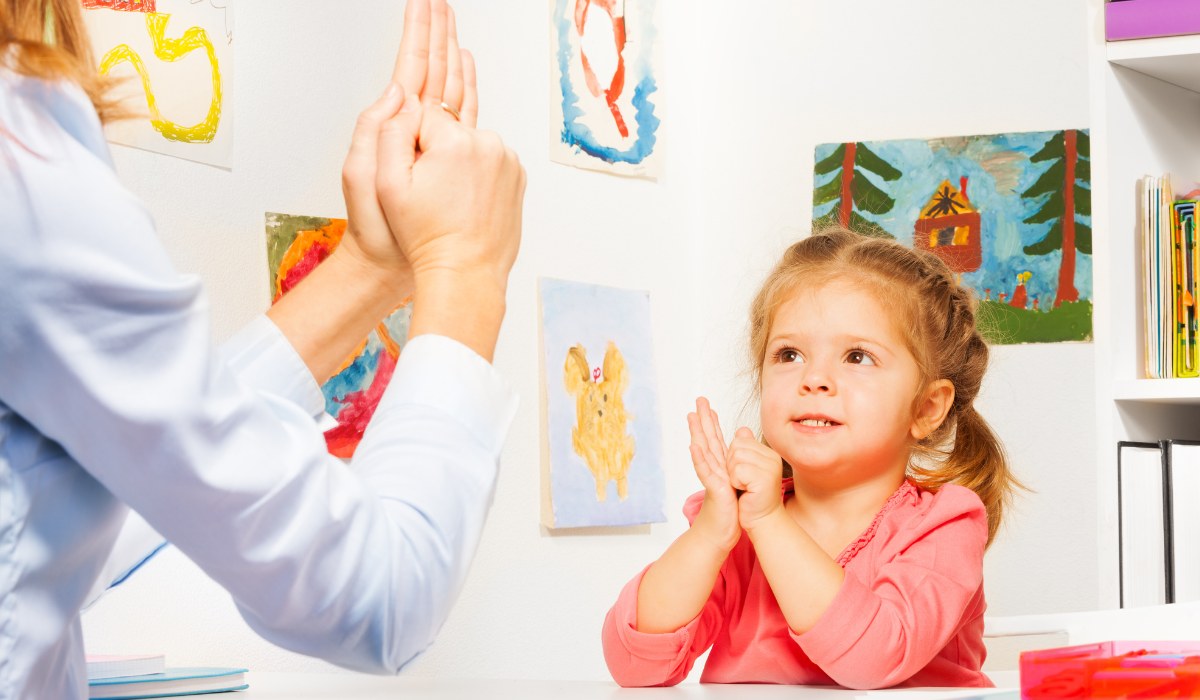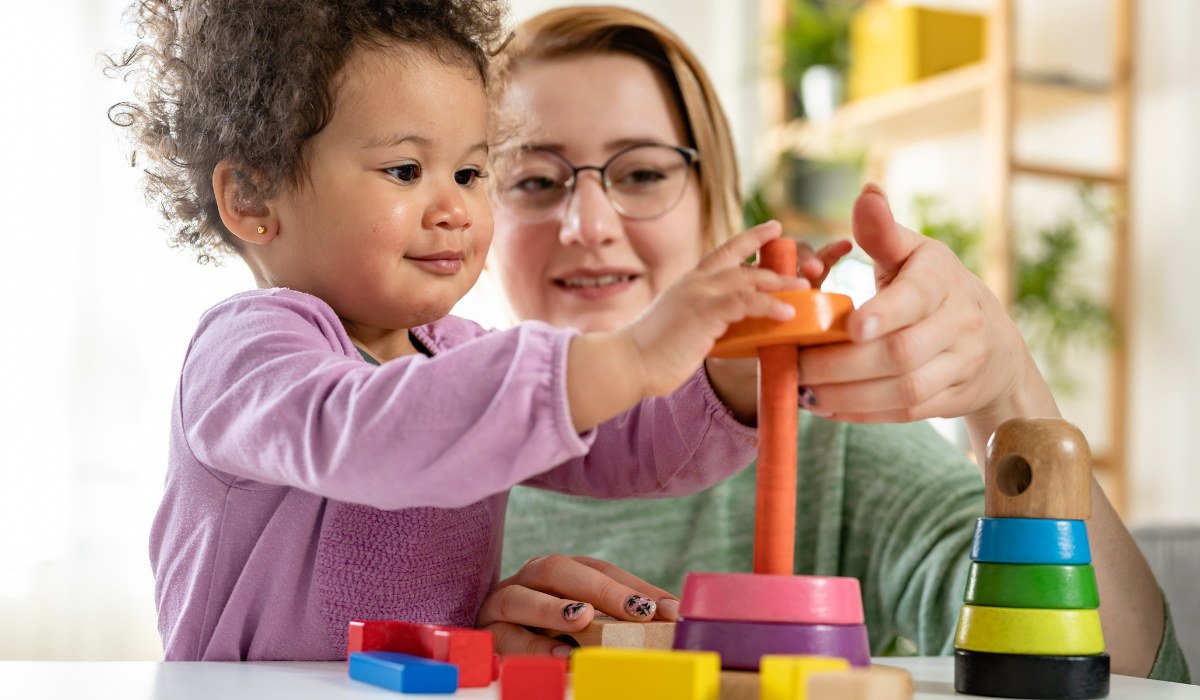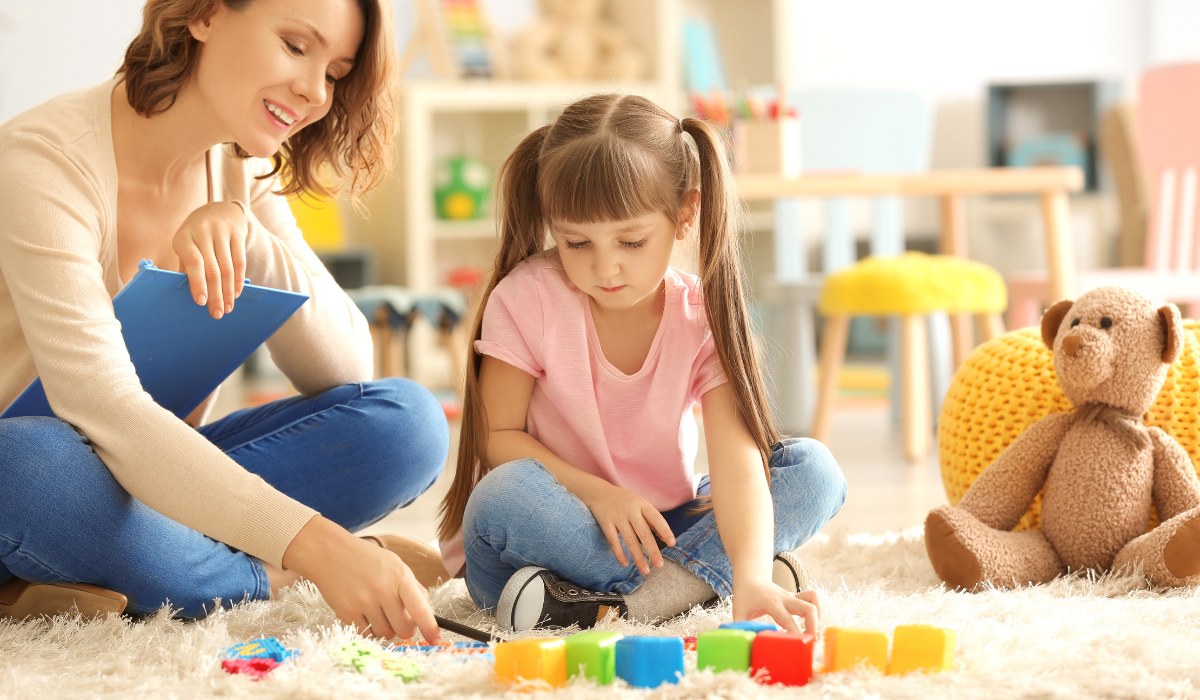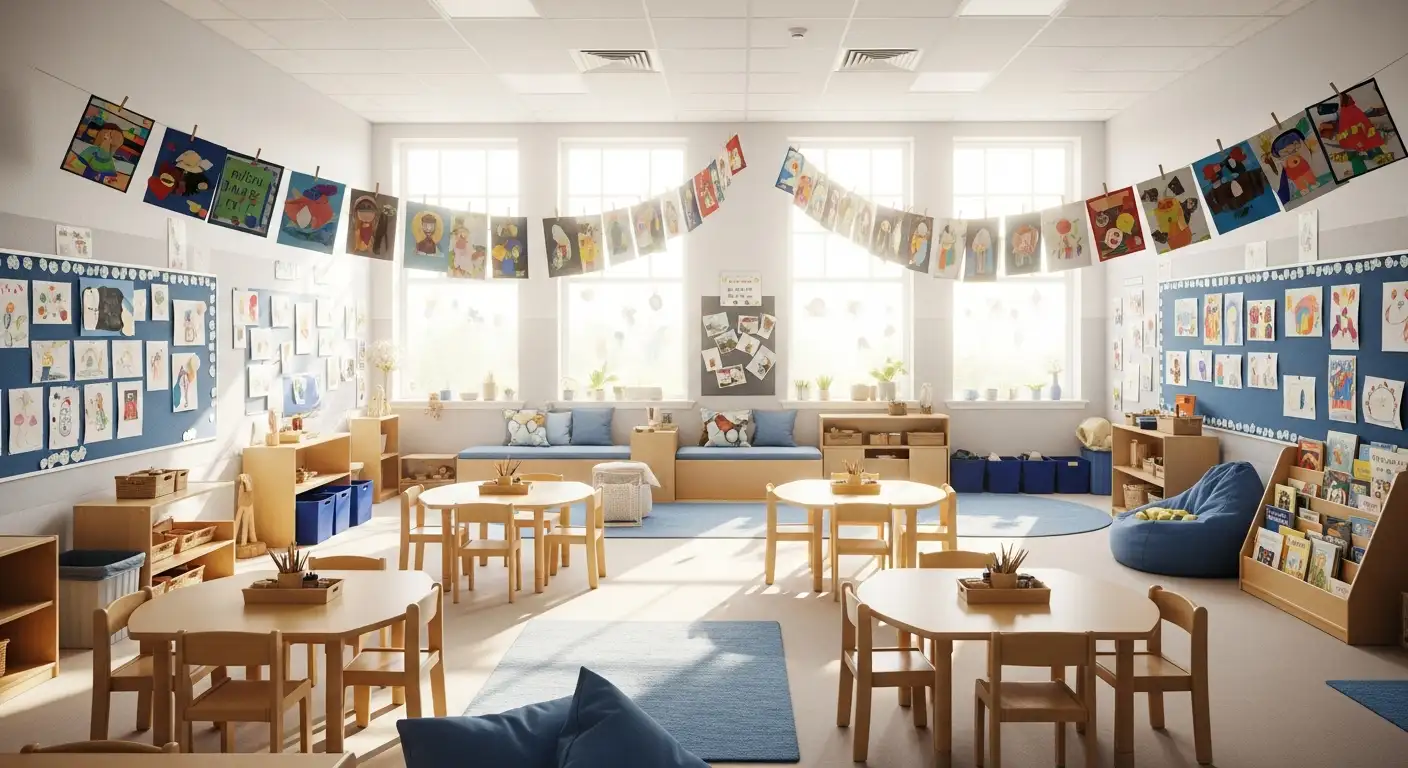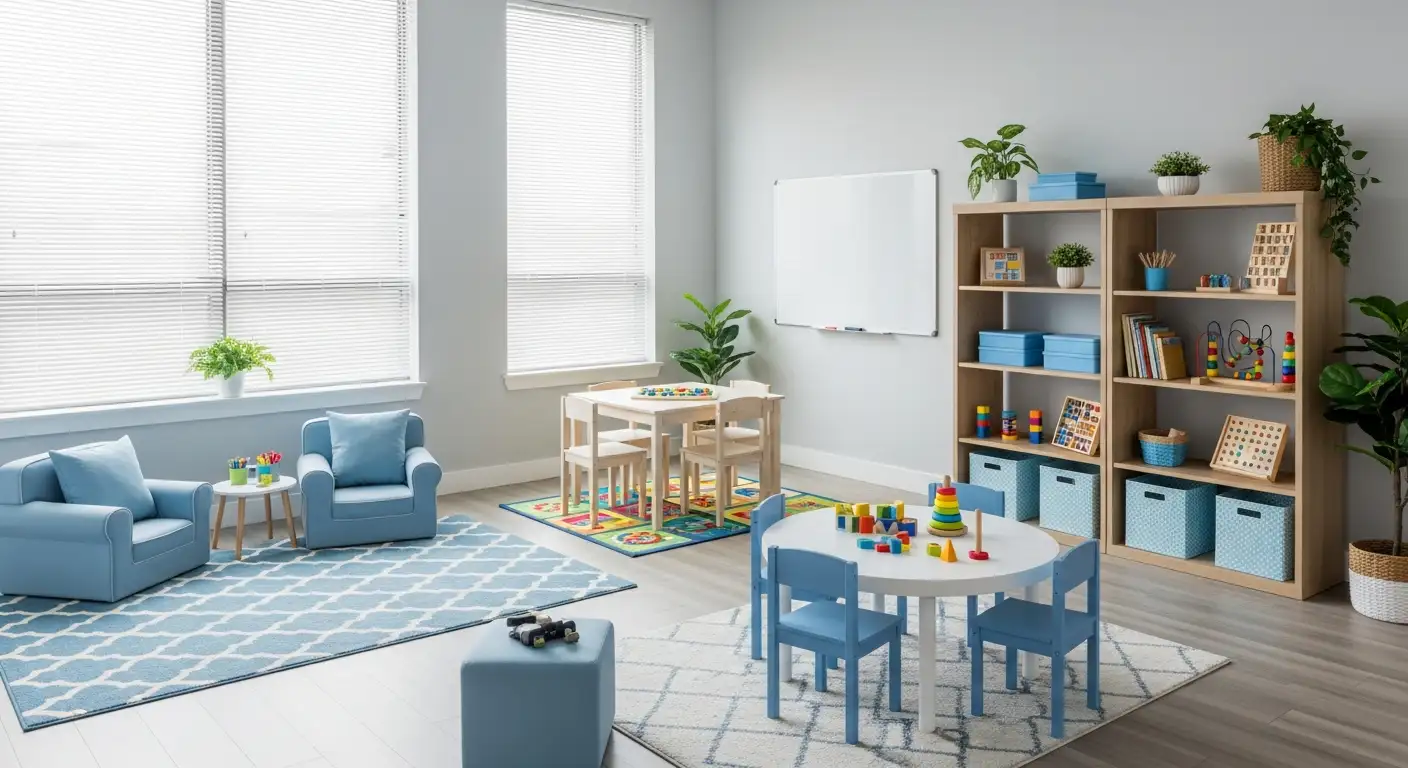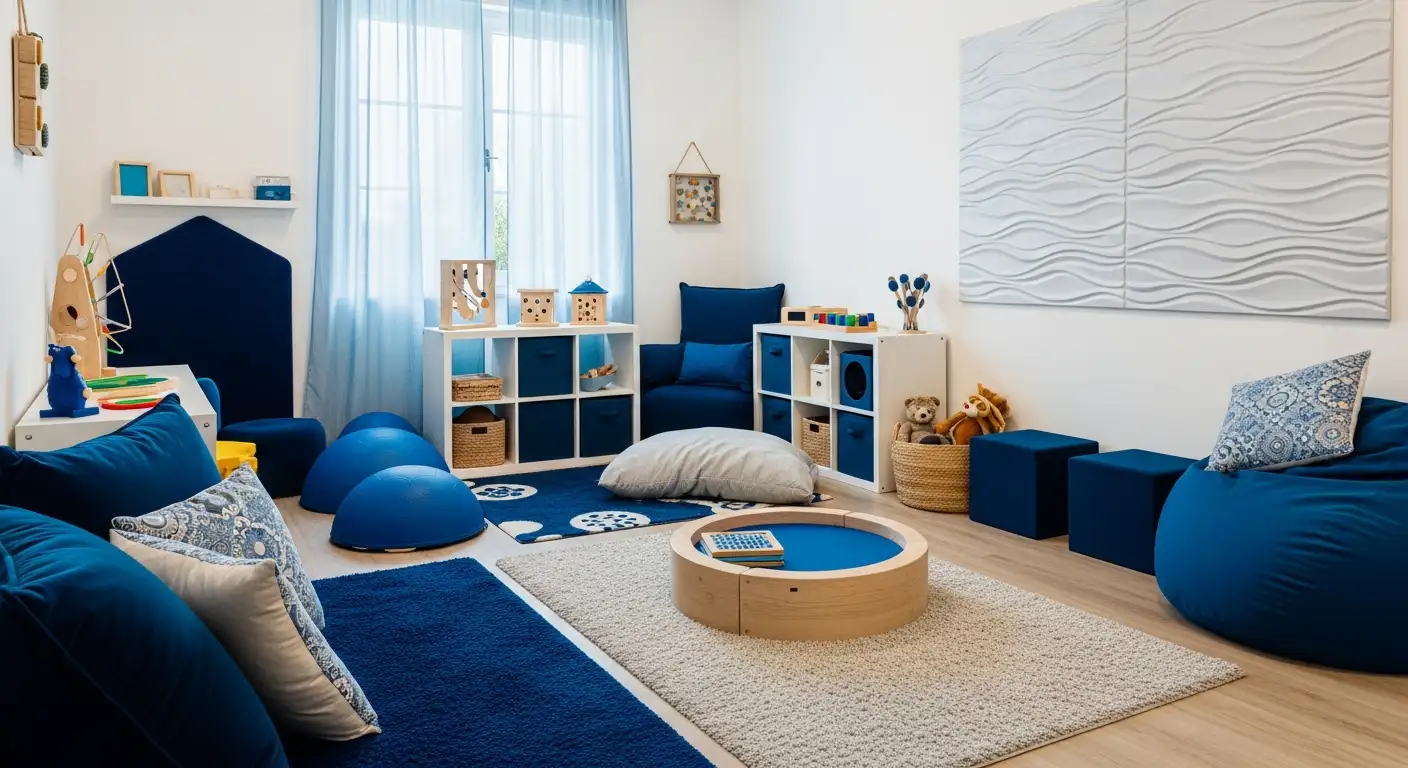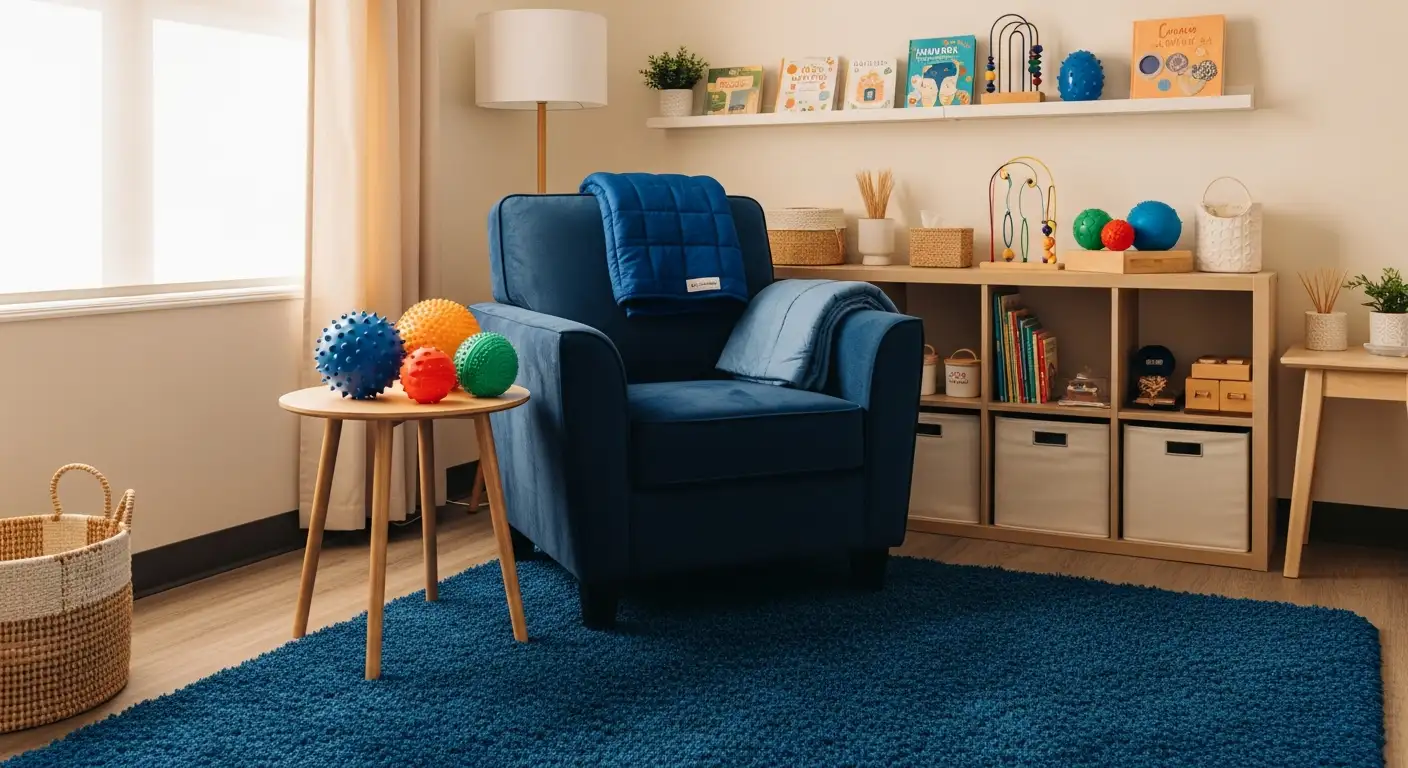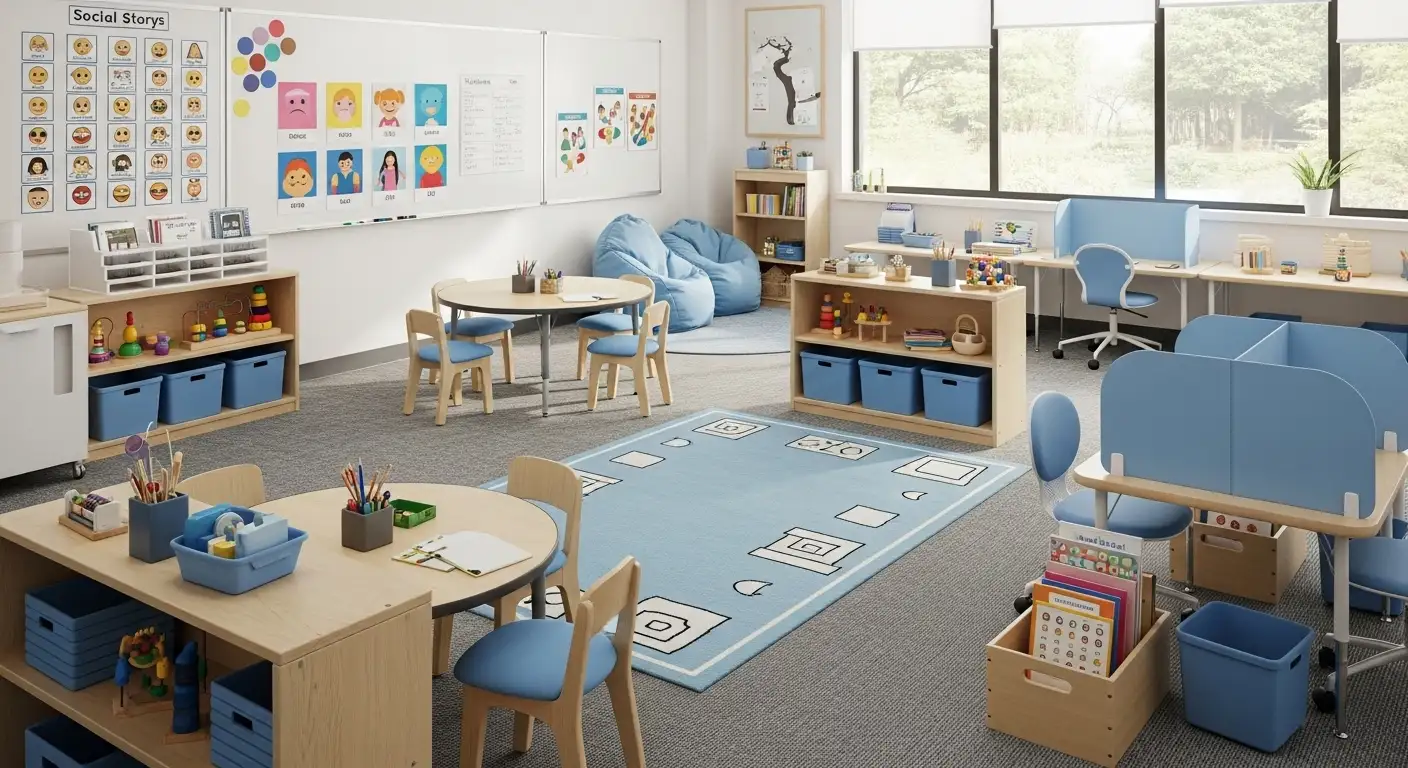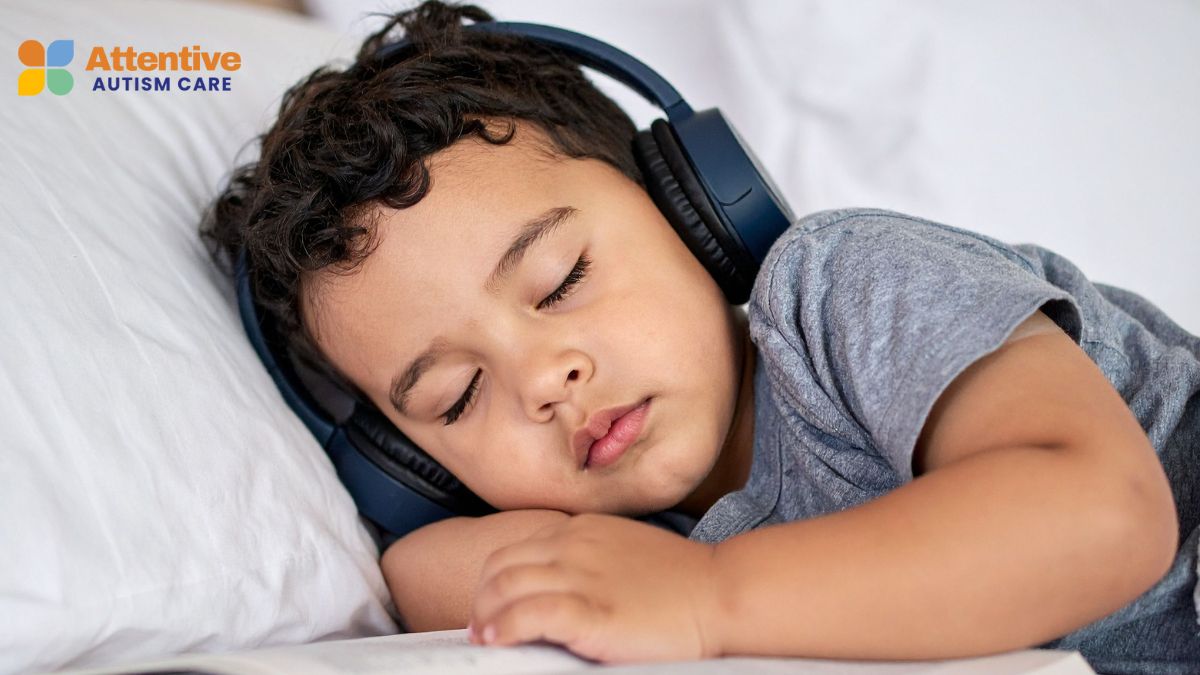Calming Strategies For Kids With Autism
Understanding and Supporting Emotional Well-being in Children with Autism

Nurturing Calmness in Children with Autism: A Guide for Caregivers
Children with autism often experience sensory overload and emotional distress that can lead to challenging behaviors such as meltdowns and tantrums. Recognizing the differences between these responses and understanding effective calming strategies can help caregivers provide the necessary support to promote emotional regulation and well-being. This article explores practical approaches, behavioral insights, and resources to assist in managing these behaviors compassionately and effectively.
Differentiating Meltdowns and Tantrums in Children with Autism

How do you differentiate between meltdowns and tantrums in children with autism, and how should each be responded to?
Distinguishing between meltdowns and tantrums is essential for parents, caregivers, and educators working with children on the autism spectrum. Tantrums are deliberate, goal-oriented behaviors where a child aims to achieve a specific outcome, such as getting a toy or avoiding an undesired activity. They are often characterized by shouting, crying, or stomping but tend to subside once the child's goal is met or their demands are fulfilled.
In contrast, meltdowns are involuntary reactions to overwhelming stimuli or sensory overload. They stem from an overload of the nervous system, which perceives certain sensations as threats, activating fight, flight, or freeze responses. During a meltdown, behaviors may include physical reactions like stimming, crying, self-injury, or withdrawal, and these episodes can last for 20 minutes or longer, regardless of external requests.
When responding, behavioral approaches differ. For tantrums, responses should focus on setting clear boundaries, avoiding reinforcement of negative behaviors, and helping children communicate their feelings better. During a meltdown, the goal shifts to ensuring safety, minimizing sensory input, and creating a calming environment. It's important to stay calm and reassuring, use sensory tools or spaces, and avoid escalating the situation.
By understanding these differences, caregivers can provide appropriate support—using positive reinforcement and teaching communication skills for tantrums, while offering reassurance, safe spaces, and sensory calming strategies during meltdowns.
Recognizing Signs of Overload, Stress, or Anxiety in Children with Autism

What signs indicate that an autistic child is experiencing overload, stress, or anxiety, and what calming interventions can be used?
Autistic children often exhibit specific behaviors when overwhelmed or anxious. Signs of sensory overload include behaviors like covering ears or eyes to block out overwhelming stimuli, as well as physical agitation such as pacing or stomping. They might also engage in repetitive behaviors like rocking or hand-flapping, and sometimes self-injure or withdraw from environment cues.
Emotionally, children may display rapid speech or become very quiet and still, signaling internal distress. Emotional outbursts or tantrums, which are reactive expressions of stress, can sometimes escalate into meltdowns. Recognizing these signs early is crucial for providing timely support.
To help the child regain calmness, caregivers can create a sensory-safe environment by reducing overwhelming stimuli. This can involve turning off loud noises, dimming bright lights, or offering calming tactile objects like weighted blankets or fidget toys. Offering reassurance and gentle physical comfort, such as a hug or a reassuring touch, can also be soothing.
Additional techniques include:
- Body-Based Regulation: Deep pressure through weighted blankets or gentle squeezing can promote relaxation.
- Visual Supports: Using social stories or visual schedules helps children understand what to expect and reduces anxiety.
- Quiet Space: Designating a calm and safe area where the child can retreat when overwhelmed allows them to self-regulate.
Employing these strategies can help children process their feelings and stimuli, reducing the likelihood of a full meltdown and promoting emotional stability.
What techniques can parents and caregivers use to support emotional regulation in children with autism?
Supporting emotional regulation involves teaching children strategies they can use independently and providing ongoing support. One effective method is teaching deep breathing exercises, such as inhaling slowly and exhaling or practices like balloon breathing. Visual aids like emotion charts, or the Zones of Regulation framework, help children recognize and label their feelings.
Establishing predictable routines and visual schedules minimizes surprises that can cause stress. Sensory tools and calm-down kits—containing items like squishy balls, textured toys, or noise-canceling headphones—offer immediate relief during sensory overload.
Creating designated calming spaces, often called safe zones, provides a physical location where children feel secure and can decompress. Modeling appropriate responses, discussing emotions openly, and offering choices can empower children to regulate their feelings more effectively.
In addition, interventions like social skills training or occupational therapy focused on sensory integration build resilience and emotional skills over time. Using consistent reinforcement, patience, and understanding fosters trust and promotes emotional awareness.
By integrating these approaches, caregivers can help children develop awareness of their emotions and use tools to manage stress proactively, leading to improved overall well-being.
Practical Techniques for Calming During Emotional Distress
What are some practical techniques to help autistic children calm down during emotional distress?
Supporting children with autism during moments of emotional overwhelm involves a range of calming strategies tailored to their sensory and emotional needs. One effective approach is to utilize sensory tools such as fidget toys, squishy balls, or textured objects that provide tactile stimulation and help redirect restless energy.
In addition, body-based regulation techniques like engaging in stimming activities—such as jumping, swinging, or rocking—can help stabilize their nervous system. Weighted blankets, lap pads, or compression clothing provide gentle, calming pressure through deep touch therapy, promoting relaxation.
Creating a designated calm environment is crucial. This space should be equipped with soothing lighting, sensory bottles filled with glitter or beads, and visual supports like picture schedules or social stories. Such spaces allow children to retreat and self-regulate safely.
Communication plays a vital role. Soft, reassuring words, coupled with minimal verbal commands, help in calming the child. Sometimes, physical comfort through gentle hugs or tactile objects can reassure them and reduce anxiety.
Teaching specific techniques, such as deep breathing exercises—including the '54321' grounding method—can help children regain composure. Visual aids depicting breathing or calming routines guide children through relaxation steps.
Routine and predictability also contribute significantly. Consistent schedules and visual charts help children understand what to expect, reducing uncertainty and emotional distress.
Addressing triggers is essential. Recognizing specific stressors like loud noises, bright lights, or sudden changes allows caregivers to preemptively prepare or modify the environment.
Finally, encouraging regular practice of calming activities nurtures emotional resilience. When children learn to employ these strategies proactively, they become more equipped to handle overwhelming situations.
Creating a Supportive and Predictable Environment

How can consistent routines and visual schedules help autistic children feel more secure?
Establishing a predictable routine along with visual schedules plays a crucial role in providing a sense of security for children with autism. These tools outline daily activities clearly, reducing uncertainty and anxiety. When children know what to expect and see visual cues that correspond to their schedule, they can anticipate transitions and manage their expectations better.
Routine activities reinforced with visual supports aid children in developing independence and self-regulation skills. This structure minimizes surprises that could otherwise trigger stress or meltdowns. By knowing what will happen next, children feel more in control, which promotes emotional stability and reduces frustration.
Creating designated calming spaces equipped with sensory tools such as weighted blankets, fidget toys, and visual supports further supports emotional regulation. These environments serve as a safe retreat where children can decompress, manage sensory overload, and regain composure. Such consistency and familiarity strengthen their ability to handle everyday stresses and foster overall emotional well-being.
What sensory tools and calming spaces are recommended to assist children with overload?
Supporting children during sensory overload involves providing access to sensory tools tailored to their individual preferences. Essential items include fidget toys, squishy balls, weighted blankets or lap pads, sensory bottles filled with glitter or beads, noise-canceling headphones, and visual aids like calming lighting or visual schedules.
Creating a dedicated calm-down corner or quiet space equipped with these tools helps children retreat when overwhelmed. This space should be comfortable and designed to minimize stimuli—soft lighting and cozy seating can create a soothing environment.
Adding visual supports like social stories or calming music can also enhance relaxation. These elements help children process their sensory experiences and emotional states, aiding them in self-regulation. The combination of appropriate sensory tools and a designated calming environment enables children to better manage their emotions and sensory needs, ultimately supporting their mental and emotional health.
Supporting Emotional Growth and Social Skills Through Calming Practices

How can calming strategies promote emotional well-being and social-emotional skills in children with autism?
Calming strategies are essential tools that help children with autism manage their emotions and develop vital social skills. These techniques create a structured environment where children can better understand and express their feelings. Visual aids, such as emotion charts and social stories, allow children to recognize and label their emotions, which promotes self-awareness and emotional literacy.
Using calming routines—like scheduled sensory breaks, deep breathing exercises, and quiet time—provides predictability, reducing anxiety and fostering a sense of safety. This consistency supports emotional regulation, allowing children to respond thoughtfully rather than impulsively.
Supportive interactions with caregivers—characterized by patience, empathy, and positive reinforcement—further reinforce emotional stability. When children feel secure and understood, they are more confident in practicing social skills and managing stresses.
Incorporating these practices into daily life not only helps in immediate distress reduction but also builds resilience. Over time, children learn to handle their emotions more independently, leading to improved social interactions and overall emotional health.
What additional resources are available to help caregivers teach calming and relaxation skills?
Caregivers seeking to enhance their support strategies have access to a wide array of resources. Online platforms and organizations provide educational materials, videos, and printable activities designed explicitly for children with autism.
For example, the Autism Research Institute offers training modules, webinars, and visual supports on sensory regulation and calming techniques. Resources like the 'Color Me Calm' PDF provide engaging activities tailored to children aged 1–6, helping them manage big feelings.
Grounding exercises such as the '54321' method, and breathing techniques demonstrated through videos, can be easily learned and practiced at home or in educational settings.
Support groups and professional therapies—like occupational therapy focused on sensory integration—offer tailored guidance. Additionally, many community-based programs include parent training to foster effective calm-down routines.
Exploring these materials empowers caregivers to create calming routines, recognize early signs of distress, and teach children to self-regulate across various situations.
How does understanding and expressing emotions support social and emotional development?
Teaching children to recognize, understand, and express their emotions is fundamental for social and emotional growth. When children learn to identify their feelings through visual prompts and social stories, they gain clarity about their internal states.
Expressing emotions appropriately fosters better communication and reduces frustration. This skill is crucial for developing empathy towards others and building healthy relationships.
Supportive environments that encourage emotional expression help children build confidence and resilience. For instance, using a calm, validating tone when a child is upset can teach emotional comfort and self-regulation.
Over time, these practices lead to improved social interactions, better conflict resolution skills, and increased independence in managing stress and big feelings.
How do routines and visual supports contribute to emotional regulation?
Structured routines and visual supports, such as schedules, visual cues, and social stories, provide predictability that stabilizes children with autism. These tools help children anticipate what is coming next, decreasing anxiety that often triggers meltdowns or overstimulation.
Consistent routines create a framework within which children feel secure and can focus on learning and engaging in appropriate behaviors. Visual supports simplify complex social cues and help children navigate social interactions more confidently.
By establishing predictable daily patterns, caregivers and educators enable children to develop emotional regulation skills naturally. When children know what to expect, they can better manage their reactions, resulting in calmer behaviors and enhanced emotional resilience.
How can building resilience through supportive interactions enhance social skills?
Supportive interactions are vital for building resilience and social competence. When caregivers display patience, flexibility, and positive reinforcement, they help children develop confidence in their ability to handle challenges.
Celebrating small successes and providing consistent encouragement teaches children that they can overcome difficulties and cope with stress constructively. This support promotes independence and social confidence.
Encouraging peer interactions and social play in a safe, supportive environment reinforces these skills. As children experience success in social settings, their resilience grows, enabling them to face future challenges with more adaptability.
Integrating calming practices with everyday interactions nurtures emotional stability and social growth—laying a foundation for lifelong social-emotional wellness.
| Strategy | Description | Example Activities |
|---|---|---|
| Visual Supports | Using pictures, charts, and stories to explain feelings and routines | Emotion charts, social stories, visual schedules |
| Sensory Tools | Tools like fidget toys, weighted blankets, and noise-canceling headphones | Sensory bins, calming music, textured items |
| Calm-Down Routines | Regularly scheduled calming activities and predictable routines | Deep breathing, yoga, scheduled breaks |
| Supportive Interaction | Empathy, patience, positive reinforcement | Praise, gentle reassurance, active listening |
| Creating Safe Spaces | Designated quiet areas with sensory objects | Relaxation corner with soft lights and calming toys |
Understanding and applying these practices can significantly advance emotional maturity and social skills, supporting children with autism in leading fulfilling and resilient lives.
The Role of Caregiver Patience, Consistency, and Modeling

How does parental patience and calmness influence the effectiveness of calming strategies?
Parental patience and calmness are essential when it comes to managing meltdowns in children with autism. When caregivers maintain a composed demeanor during a child's distress, they create a safe space that encourages the child to feel secure. This modeling helps children understand that difficult feelings are manageable and that their caregivers are a stable source of support.
Being patient allows caregivers to respond thoughtfully rather than react impulsively. This prevents escalating the situation and provides the child with a sense of stability and predictability. As a result, children are more likely to feel comfortable engaging in calming techniques like deep breathing or sensory activities.
Over time, consistent, calm responses foster trust and reinforce emotional safety. Children learn that their feelings are valid and that they can rely on their caregivers for support. This nurturing environment encourages children to develop their own self-regulation skills, leading to fewer and less intense meltdowns in the long run.
Fostering a Calmer Future for Children with Autism
Implementing a comprehensive approach that incorporates sensory tools, structured routines, emotional recognition, and caregiver patience creates a supportive environment for children with autism. Recognizing early signs of overload, differentiating behaviors, and applying targeted calming strategies can significantly improve emotional regulation. Resources such as social stories, visual schedules, and professional guidance empower caregivers to nurture resilience and well-being. Consistency and compassion are key ingredients in helping children build self-awareness, develop social-emotional skills, and thrive in a world of sensory and emotional challenges.
References
- Meltdowns & Calming Techniques in Autism
- 7 Calming Strategies for Autism Every Parent or Guardian ...
- Calming Strategies
- Calming Strategies to Support an Autistic Person
- 10 Calming Strategies for Autism: Reduce Anxiety and ...
- 10 Tips on How to Calm an Autistic Child
- Top Tips to Calm a Child with Autism










